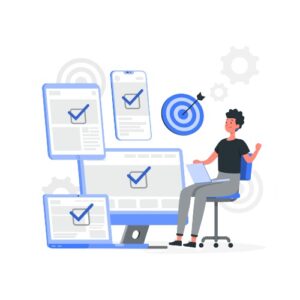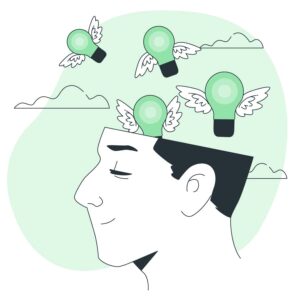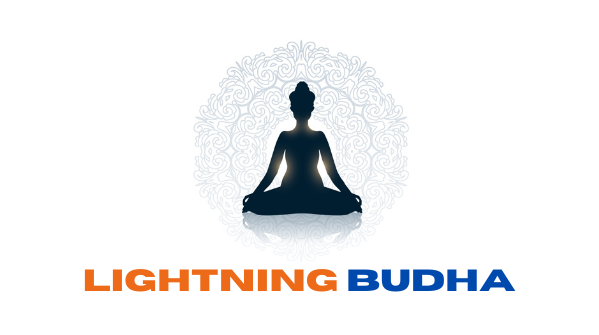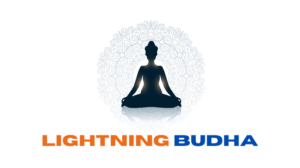Unlock the secrets to rapid problem-solving with “The Art of Quick Problem-Solving: Lessons from Lightning Buddha.” Discover techniques and strategies to enhance your decision-making skills and tackle challenges with speed and efficiency.
In our fast-paced world, being able to solve problems quickly is key. This article will share lessons from the “lightning Buddha.” It aims to help you boost your learning skills and face challenges with ease.
Exploring the lightning Buddha’s principles will show you how to think in a new way. You’ll learn to use what you already know, simplify tough topics, and learn using all your senses. We’ll also cover remembering info better, studying smart with breaks, and applying the Lightning Buddha’s advice on problems.
This journey will help you become a top learner and keep growing yourself. You’re about to learn the secrets of the lightning Buddha. Soon, quick problem-solving will be second nature to you.

Key Takeaways:
- Cultivate a growth mindset to unlock your learning potential.
- Activate your prior knowledge to build a solid foundation for faster learning.
- Leverage chunking to break down complex topics and improve comprehension.
- Engage multiple senses through multisensory learning for enhanced retention.
- Practice active recall to strengthen your memory and identify knowledge gaps.
- Utilize spaced repetition to optimize your learning schedule and boost long-term retention.
- Apply the lightning Buddha’s wisdom to problem-solving and teaching others.

Embrace a Growth Mindset: Unlock Your Potential
To start on a path of quick learning, it’s vital to have a growth mindset. This mindset says that intelligence can grow through hard work and not stay the same. With a growth mindset, you’ll see new chances and meet challenges with energy and will.
Cultivate a Growth Mindset
By thinking they can learn, people open doors to their full potential and get better at learning. Studies show that looking at things positively can make you more motivated, better at solving problems, and feel better overall. Those with a growth mindset can handle changes at work and find chances for progress.
Approach Challenges with Enthusiasm
Putting in effort and working hard is key to a growth mindset, helping you master things and succeed by trying and not giving up. Loving to learn can bring lots of new chances for you to grow as a person. Seeing challenges as ways to learn and get better leads to always growing and improving.
Believe in Your Ability to Learn
Everyone can grow and get a growth mindset by knowing themselves, pushing past doubts, and working hard. Research shows that open-minded people who want to learn are set to do well in life. Studies highlight that folks with a growth mindset tend to do better in work, school, and personal connections.

Activate Prior Knowledge: Build Connections
Before starting on a new subject, it’s key to think about what you already know. This helps connect old info with the new, making learning faster. Remembering what you’ve seen or learned before lays a strong base for learning well and quickly.
Recall Relevant Information
To connect with a new topic, first, think about what you already know. This makes it easier to spot the links between what you know and the new stuff. It starts you off on a path to learn more effectively.
Identify Keywords and Concepts
Think about the important words or ideas you’ve come across before you start learning. Recognizing these makes learning new things smoother.
Create a Foundation for Faster Learning
Using what you already know helps you learn quickly and understand better. It boosts not just how fast you learn but also how well you can solve problems and think critically.
Methods like advance organizers and worksheets can be great for activating what you already know. They make you think about the topic before and after learning.
Your past knowledge matters when it comes to learning new things. It’s by making these connections that we learn the most, and the best.
Chunking: Break Down Complex Topics
The human brain can only handle so much info. By breaking complex topics into smaller parts, you can learn faster. Start by finding the main ideas. Focus on each bit until you get it. This way, you’ll remember more without getting overwhelmed.
Barbara Oakley says the steps to chunking are simple Focus, Understand, and Contextualize. Creating a library of chunks helps your brain spot different problems. This makes solving them quicker. With practice, you form strong brain “chunks” of knowledge.

Using chunking in class stops students from missing key info, helps each student better, and makes lessons clearer. Activities like writing, discussing with peers, or solving puzzles are great. They open paths to harder topics. This makes students learn more and teachers teach better.
Divide big topics into smaller ones to learn faster.7 Understand each part well. This boosts how fast you learn and remember. Working together in pairs makes learning fun and fair for everyone.
| Chunking Strategies | Benefits |
|---|---|
| Focus on main ideas and sub-topics | Efficient absorption of information, clear mental framework |
| Build a chunked library of knowledge | Recognize different problem types for quick problem-solving |
| Implement processing activities | Prevent content gaps, support differentiated instruction, enhance understanding |
Utilize Multisensory Learning: Engage Multiple Senses
When we learn with all of our senses, we remember more and understand better. This means using not just our eyes when reading. We can also look at images, listen to sounds, and even touch things.
Incorporate Visual Aids
Visual aids like mind maps and videos help a lot. They make our brains process information better. It’s easier to learn and remember When we see text and pictures together.
Use Audio Resources
Listening to books, music, or games also helps us learn. This is good for people who find reading or spelling hard. Auditory learning is about teaching through sounds. It’s another way to learn.
Participate in Interactive Discussions
Talking, moving, and playing games make learning fun. It helps us make connections faster. Such activities link what we see and hear in books to real life. They also boost our thinking skills.
Using pictures, sounds, and talking makes learning better. It involves more of our brain, which is great for understanding things. This approach helps all students learn more and keeps knowledge fresh.
Practice Active Recall: Strengthen Memory
Just reading or listening isn’t great for remembering things for a long time. Instead, try recalling what you’ve learned. This method, known as active recall, helps your brain make better connections.
It moves facts from your short-term memory to the long-term.
Explain Concepts in Your Own Words
Have you ever studied something and then tried to explain it yourself? Doing this helps you get the idea. It also shows you what you might not understand yet. Speaking in simple terms is a great way to learn more.
Write Summaries
Explaining things out loud is good. But writing it down can be even better. When you write summaries of what you’ve read, your memory gets stronger.
Plus, you get better at remembering and using the information later on.
Identify Knowledge Gaps
Trying to explain and summarize the material can show you where you’re still unclear. Looking at what you’ve missed lets you focus better on understanding those parts.
Using active recall boosts your memory and learning skills. It makes studying complex topics easier and helps you remember things for a long time. These methods are key to being a better learner.
Utilize Spaced Repetition: Optimize Learning Schedule
Spaced repetition is a key strategy for boosting your study routine. It helps you remember things longer. You do this by going over what you’ve learned at more spaced-out times.
Review Information at Increasing Intervals
Don’t try to learn everything in one sitting. Break it up and review it daily, then weekly, and finally monthly. This method beats forgetting so that you truly master what you’ve learned.
NEJM Knowledge+ is a prime example. It uses special algorithms to remind doctors of key facts just when they might forget them. This ensures that their knowledge stays sharp over time. Moreover, its “Recharge” feature picks questions that are tough for them or haven’t been seen in a while. This helps even more with remembering through targeted repetition.
Use Flashcards or Digital Apps
Adding flashcards or apps to your study routine can make a big difference. Tools like Readwise mix active remember and spaced review smartly. This makes sure you remember what you’ve studied for a long time.
With Readwise’s Mastery feature, you get questions or facts to review just when you’re likely to forget them. It’s a personalized way to keep material fresh in your mind. You can also use this feature to study in question-and-answer style. Doing this, you can boost how well you remember important ideas over the long haul.
So, making spaced repetition part of how you study is smart. It helps you keep learning fresh and remember more over time.

Problem-Solving: Applying Lightning Buddha’s Wisdom
Learning quick techniques from the lightning Buddha helps in solving problems better. This makes it easier to look at complicated situations, see patterns, and come up with new ideas.
It also makes you better at thinking critically, which is key to solving problems fast and efficiently.
Analyze Complex Situations
Research in psychology and cognitive science shows how important emotions are in problem-solving. By controlling their feelings, people understand complex issues clearly. This helps in solving problems better
Identify Patterns and Generate Solutions
Studies show some many ways and things affect how we solve problems each day. Using the lightning Buddha’s approach helps in finding hidden patterns and creating new solutions. These solutions can fix problems from their core.
Develop Critical Thinking Skills
Cognitive scientists say abstract thinking and creativity are crucial in solving hard problems. Developing critical thinking helps you solve problems smartly. It makes you ready to face any challenge and find real answers.
Ven Geshe Kelsang Gyatso stated, “If everyone in the world were to practice cherishing each other, all the problems of our world would be solved in just a few years.” This quote shows how powerful compassion and wisdom are in solving big world problems. Combining this idea with the lightning Buddha’s wisdom can encourage a complete problem-solving approach. It deals with both practical and spiritual aspects of issues.
Teach Others: Solidify Your Understanding
Teaching others helps you grasp a subject you’re learning about. When you explain things to someone, you spot what you don’t know well. It makes your ideas clearer. This also lets you improve how you organize and explain information. That makes learning even better. Being a teacher helps you understand more. It also improves how you talk to others about what you know.
Reinforce Your Knowledge
The protégé effect is a cool trick your mind can do. It says you can get better at learning stuff when you pretend to teach it to someone else. This works pretty well. People who study this way tend to do better on tests compared to those who just study alone.
The thing is to learn like you will teach it to someone else. Or even actually teach it. This makes learning more fun and helps you feel like you’re good at it.
Organize Information Coherently
Teaching others also makes your knowledge clearer. There are ways to do this well with a group. Like, using methods such as Class-wide Peer Tutoring or having students explain what they’ve learned to you. Strategies focus on seeing and teaching content in different ways. For example, making up quiz questions for a biology lesson or using math models.

Conclusion: Embrace the Path of the Lightning Buddha
Use the fast learning techniques of the lightning Buddha to reach your full learning power. Have a growth mindset, use what you know, break info into parts, and activate all senses.
Remember, with practice, you can learn more efficiently. Start on a path of always growing and improving. This way can bring more success in everything you do.
Over 2500 years later, the Buddha’s teachings still impact many. By using the lightning Buddha’s fast learning ways, you can solve problems better and think creatively. This path helps you reach your highest potential and achieve big goals in life and work.
Learning from the lightning Buddha isn’t just about being quick. It’s also about always wanting to learn, change, and get better. Be excited to learn and grow every day. This path gives you the power to face challenges, improve how you work, and leave a real mark in your world.
FAQ
What are the key topics covered in this article?
The article dives into powerful learning methods inspired by a fast and wise lightning Buddha. It covers a growth mindset that says intelligence grows with effort. It also talks about using your knowledge to learn new things faster. You’ll learn how to break up big topics into smaller pieces for easier understanding. It suggests learning with all your senses and not just reading.
This helps them remember and understand information better. The article also shows how to actively remember what you’ve learned. It says reviewing lessons over time is better than trying to cram everything at once. These techniques can help with school, work, or any learning you do.
How can readers cultivate a growth mindset?
To have a growth mindset, believe you can get smarter with hard work. This means not seeing yourself as ‘just smart’ or ‘not smart’. It’s about trying your best and not giving up when things get tough.
Having a growth mindset makes learning more enjoyable and opens more doors to new opportunities. It helps you tackle challenges with excitement and not fear.
Why is it important to activate prior knowledge before learning new information?
Linking what you already know to new facts helps understand them quickly. Remembering old but relevant facts or terms lays a strong foundation. This speeds up the new learning process.
How can readers break down complex topics to improve their learning speed?
Start by finding the main ideas in what you’re learning. Then, focus on each part until you understand it well. This way, you learn faster and keep a clear mind on the topic.
What are the benefits of engaging multiple senses during the learning process?
Using your eyes, ears, and hands when learning can make you remember and understand better. Different senses mean different brain parts working, creating a full learning experience. This way, you learn better and faster.
How can readers practice active recall to strengthen their memory?
Active recall means not just reading or listening but making yourself remember. You can do this by explaining topics in your own words or writing short summaries. It helps keep the memory strong, from short-term to long-term.
How can spaced repetition help optimize the learning schedule?
Spaced repetition is about reviewing what you learn but expanding time gaps. This method uses a known fact: we remember things better when we revisit them over time. It’s better than trying to learn all at once.
How can readers apply the lightning Buddha’s wisdom to problem-solving?
Learning to learn quickly also helps in solving problems. It makes you see complex issues clearly and find creative answers. So, using fast learning methods also boosts your problem-solving skills.
Why is teaching others an effective way to solidify one’s understanding?
Teaching someone what you’ve learned makes you understand it better. It shows where you might be confused and need more study. It also helps you organize what you know, which is key to learning it well.
Source Links
- https://lightningbudha.com/7-fast-learning-techniques/
- https://nancytwine.com/how-a-growth-mindset-can-help-you-thrive/
- https://hives.co/en/blog/unlock-your-full-potential-with-a-growth-mindset
- https://teaching.vt.edu/teachingresources/adjustinginstruction/priorknowledge.html
- https://kpcrossacademy.org/schema-activating-prior-knowledge/
Other Interesting Posts To Read:
Maximizing Productivity: How to Get More Done in Less Time
5 Mindful Practices for Lightning-Fast Decision Making
Mindful Breaks: Recharging Your Energy with Lightning-Fast Pauses


